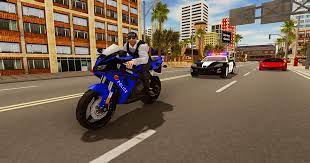
Physics of shooting in a bike chase
An introduction to Physics of shooting in a bike chase
Name: Own Teacher
Email: info@ownteacher.com
Created At: 31-10-2023
The physics of shooting in a bike chase involves a complex interplay of various physical principles and factors that influence the accuracy, stability, and effectiveness of firing a weapon while on a moving motorcycle. Here's a detailed explanation:
Momentum and Inertia: When riding a motorcycle, the rider and the bike have momentum and inertia. The rider's body, the bike, and the firearm all possess mass and velocity. Changes in the direction of the motorcycle or the recoil from the firearm can affect this momentum, making it challenging to maintain balance and control.
Projectile Motion: Bullets fired from a gun follow a curved trajectory due to gravity, which is known as projectile motion. The rider must account for this curvature when aiming at a target while considering the bullet's speed, angle, and the target's distance.
Recoil: Every shot fired generates recoil force that can affect the motorcycle's stability. Managing this recoil is critical to avoid losing control, especially in high-speed chases.
Balance and Center of Mass: The rider's ability to maintain balance on the motorcycle is crucial. Shifting the center of mass due to shooting can destabilize the bike. Understanding the physics of balance and compensating for changes in the center of mass is essential.
Friction and Traction: The interaction between the motorcycle's tires and the road surface is critical for maintaining control. Firing a weapon can affect the rider's grip on the handlebars, making it vital to manage the friction between the tires and the road.
Aerodynamics: The aerodynamics of the motorcycle can influence stability at high speeds. Rapidly changing positions or using a firearm can disrupt the airflow around the bike, affecting control.
Ballistics: Understanding the ballistics of the firearm is crucial. Factors like bullet type, muzzle velocity, and wind conditions affect accuracy. Shooting while in motion complicates these factors, making precision shooting challenging.
Target Tracking: Maintaining a clear line of sight on a moving target is difficult on a motorcycle. The rider must anticipate the target's path and adjust their aim accordingly.
Risk Mitigation: The physics of shooting in a bike chase also involves assessing the risks. Stray bullets, ricochets, and potential harm to bystanders are significant concerns, requiring precise firearm handling.
Training and Practice: Riders involved in bike chases require extensive training and practice to understand and apply the physics involved. This includes honing shooting skills, learning to manage recoil, and adapting to the dynamics of a moving motorcycle.
In summary, the physics of shooting in a bike chase is a complex and dynamic field that involves understanding and managing various physical principles, including momentum, projectile motion, balance, and recoil. Riders must navigate these physics to enhance their accuracy and safety while engaged in high-speed pursuits. Safety and adherence to the law are paramount in any such situation.
Comment List
Leave a Comment.



